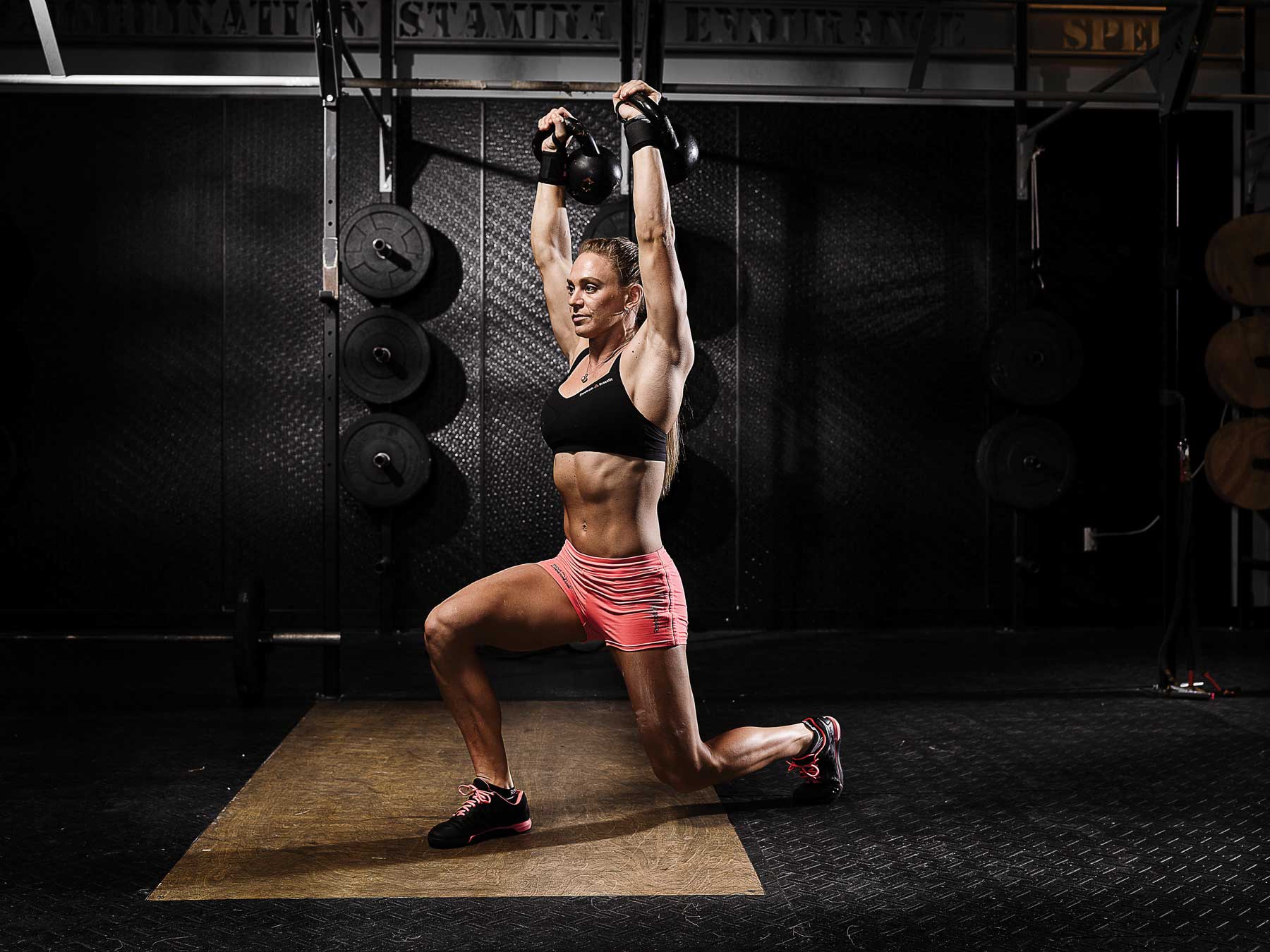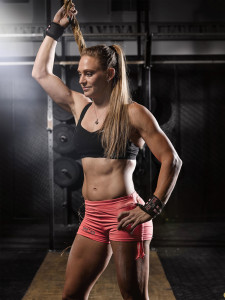For CrossFit Games elite athletes like Southwest Florida’s own Talayna Fortunato and Lauren Brooks, CrossFit is a full-time sport, where living and breathing competitive training is the name of the game.
Unless you’ve been living under a rock for the past few years, you already know that CrossFit has exploded in popularity not just in Southwest Florida, but around the world as well. In fact, here are some pretty staggering statistics to put that into perspective: According to social listening and online brand analysis company Channel Signal, by early 2014, the year-over-year growth rate of the CrossFit Games alone was 166%, and there were 7,000 affiliate gyms (compared to just 13 in 2005). Speaking of the Games, when the CrossFit Games Open premiered in 2011, over 26,000 athletes signed up. By 2013, that number had ballooned to 168,000, with women’s participation increase outstripping men’s 129% to 109%, respectively.
Though casual athletes are drawn to the variation of the daily workouts — from aerobic exercise to gymnastics to Olympic weightlifting — and the camaraderie inherent to the fitness program, devotees view it (and treat it) as a serious sport, where the ultimate goal is the much-coveted title of “Fittest on Earth.”
No one knows the kind of dedication it takes to get to the Games more than two of Southwest Florida’s own most successful CrossFitters, Talayna Fortunato and Lauren Brooks. Both women have not only made it there, but finished in the top 10, garnered sponsorships with major brands, and earned celebrity status both in the CrossFit world and right here at home.
Related: So You’ve Started CrossFitting…now what?
Here, Fit Nation takes a closer look at what the sport means to them, what it really takes to get to the Games, and what a day in the life of a professional CrossFitter looks like.
Talayna Fortunato
With a surname that sounds as if it is destined to bring good luck, Talayna Fortunato has had astounding success as an elite CrossFitter since she started at a local Naples gym back in 2009. After going to Regionals for two years in a row, she hit her stride in 2012, qualifying for the Games and then landing a spot at the podium when she placed third in overall competition. The next year, she was back at the Games again, taking fifth overall.
While she’s been sidelined with an ankle injury this year, that hasn’t stopped her fan base (14,969 Facebook fans and growing) from being inspired by what this Tennessee native has already accomplished.
What was your athletic background like before CrossFit?
I started gymnastics at age 4, and did it all throughout high school and on a scholarship for my last two years of college at Southern Utah University, where I competed in the All Around. I also did track and field in high school, and after my final gymnastics season joined the SUU track team, [where] I did the heptathlon and pole vault.
What was your proudest accomplishment at the Games?
I would say there’s two moments. [The first was in] 2012, where I had to beat Kristin Clever on the last event, which was Fran. Whoever beat her would go to the podium. On the last set of pull-ups, she couldn’t hold on and I did; I came down unbroken [Fortunato ended up placing third overall]. The second was in 2013 — I ended the Games on back-to-back events and I was in the top heat and won the heat for both of them.
How has training for the Games changed since you first got into the sport six years ago?
It’s so much more competitive, it’s insane. Now, if you’re thinking of being a Games athlete, you have to do endurance work, too, [like] running and swimming. An athlete can’t [just] follow a CrossFit gym’s program because it won’t be enough. [Some even] hire a coach. Most people get in shape eight weeks out from the Open, which is two months of ramping up your cardiovascular training. And before that, you have to [keep up your] strength training all year long. After the Open is over, you up the volume for Regional competition, [which means] two to three workouts a day.
What’s your diet like when you’re in training for the Games? Do you follow paleo like many CrossFitters do?
Well, paleo has gone by the wayside a little [among serious CrossFitters], and if you’re a competitive athlete, it’s not going to give you enough carbs or calories. I mainly follow a clean eating diet; a typical breakfast might be eggs, spinach, chicken sausage, protein powder, oatmeal, and coffee. Usually my meals consist mostly of veggies and protein, but I’ll also throw in [healthy carbs like] sweet potatoes or quinoa.
What do you like most about CrossFit?
I like that it’s all about performance; there’s nothing subjective [about it], like what you look like. It’s about what you can do. [Tweet “I like that it encourages females to be strong — maybe it’s not a social norm of beauty, but [it makes me] feel healthy and good about myself. “] I [also] like the variety — I’m always doing something different!
You’re sitting out this year because of an ankle injury. Do you have plans to eventually try to get back to the Games?
I want to try to get back, but I don’t know yet. I’m not sure how my ankle will be after surgery, so I have to [wait to] see how I feel. This is a rebuilding year, so we’ll see — but I’m not putting pressure on myself.
Lauren Brooks
Lauren Brooks isn’t your typical CrossFit athlete. For starters, this 2014 seventh-place Games finisher, unlike many CrossFit elite-level athletes, came into the sport with no background in weightlifting or gymnastics at all. And though she has been an athlete her whole life — she played soccer and Junior Olympic volleyball in high school — her CrossFit training was all self-made. From teaching herself how to lift to opening up CrossFit Salvation, Cape Coral’s first CrossFit affiliate gym, Brooks has followed the path less traveled to reach the upper echelons of CrossFit preeminence.
And as the mother of a 5- and 8-year-old, even her training schedule isn’t typical. Fitting in sessions before, during, and sometimes after their school day is par for the course for her, and she’s perfectly fine with that. As she states in a recent interview with Box Life Magazine, “at the end of the day, when I decide I can’t be a competitor anymore, I’m still going to be a mom.”
Luckily for her fans, Brooks’ competitive future as one of CrossFit’s finest looks to be long, bright, and filled with many more wins.
How did you get started in CrossFit?
I started CrossFitting in 2010 — 12 weeks after I had my daughter — because I was looking to get my competitiveness back, and my dad is a Division coach. It was really difficult [at first] because I had no athleticism. [After that], I wanted to coach, so I opened CrossFit Salvation. It started out of a garage, then grew into a larger facility.
What kind of diet do you follow?
I work with a really awesome diet coach, Jeff Delaney, and he gave me a plan I could follow that also gave me some wiggle room. What has been key for me is getting my body fat low enough to have better endurance [in training]. I’m not paleo, [but] I do have cheat days; I believe in a healthy balance. Inconsistency in my diet and overeating have always been my weaknesses, [because] I love food and I love to eat. So for me, I have to stop and ask myself, how badly do I really want this?
As a mother of two young children, how do you balance mom duties with CrossFit training?
Many serious CrossFitters eat, sleep, and breath training, but I can’t do that.
[A typical day] of training for might be, wake up, ride the air bike, take the kids to school, get some lifting or conditioning in, pick them back up from school. As a mother, my situation is different from other athletes.
Do you look to anyone for help or inspiration when you’re in training?
Well, I’m a Christian, so my help comes from above. Also, a lot of what I do is for my kids. And, I do it because I really enjoy the fact that I can positively encourage women to be better versions of themselves. CrossFit gave me back my confidence and self-worth, and if I can encourage women to head down the same road I did, that’s great.
What was your biggest accomplishment at the Games?
Every year at the Games, there’s a really long [open water] swim. I can’t train too hard because I get chronic ear infections, so I thought [the swim] would set me back. My only goal was to finish under the time cap, and I did, so that was a big victory for me.
What would your advice be for someone wanting to seriously compete?
Be patient with yourself and trust the process. Understand [that] it’s small victories and sometimes it’s defeat that brings success—we go through so much defeat before we see the light at the end of the tunnel. And, attitude is everything, so if you keep your hopes and eyes set on a goal, you can achieve it.
CrossFit is made [up] of so many different workouts, so you have to figure out a way to pace yourself and do your best. You can’t be better than everyone, and you don’t have to be great at every single event, so approach every workout as specific to you.
Want more on Crossfit? Read on…
Crossfit: The Good, The Bad, and The Ugly



